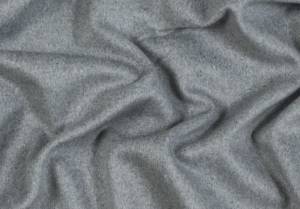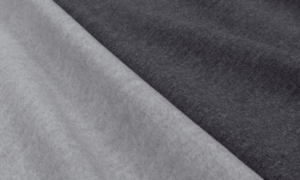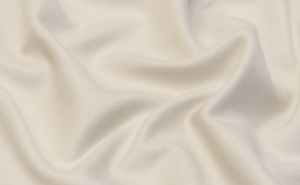Details Material Guide On Cashmere Fabric

Ammy Harryy, a devoted advocate for sustainable fashion and mindful…
Cashmere fabric is a material that is often used to describe things that are luxurious and high-quality. But what actually is cashmere? And where can you find it?
In this blog post, we’ll take a closer look at the origins and qualities of cashmere, as well as some tips on how to shop for it.
So whether you’re looking for a new winter coat or just want to know more about this luxurious fabric, read on!
What Is Cashmere Fabric?
High-quality cashmere collection is made from the soft, downy undercoat of cashmere goats. These animals are native to the highlands of Central Asia, and their fine cashmere fibers have been prized for centuries.
In order to produce cashmere wool, the cashmere goat must be combed during the molting season. Once the undercoat has been collected, it is cleaned and processed into yarn.
Only the finest cashmere fibers can be used to make pure cashmere products like a cashmere comb.
The production of cashmere wool is a time-consuming and labor-intensive process, which is why cashmere items are often quite expensive.
However, many people believe that cashmere is worth the price, as it is incredibly soft and durable.
History of Cashmere
The cashmere industry has a long and storied history. Cashmere is made from the soft, downy undercoat of cashmere goats, and it has been prized for centuries for its unrivaled softness and warmth.
The softest and most expensive cashmere comes from the cashmere goats of Mongolia, which produce fine, high-quality wool.
However, not all cashmere is created equal. The cashmere from more common breeds of cashmere goats is often coarser and less durable than the Mongolian variety.
As a result, Mongolian cashmere has remained the gold standard for luxury cashmere garments.
Despite its luxurious reputation, cashmere was once a humble textile. In the early days of the cashmere industry, the wool was collected by shearing the sheep or combing it out by hand.
This labor-intensive process made cashmere prohibitively expensive for all but the wealthiest consumers.
However, advances in technology have made it possible to mass-produce cashmere more efficiently. Today, cashmere is still prized for its exceptional quality, but it is no longer out of reach for most people.

How Sustainable Is Cashmere Fabric?
Cashmere is a luxurious fabric made from sheep’s wool. It is prized for its softness, light weight, and warmth.
Cashmere pieces are often very expensive, making them a coveted item for many people. But how sustainable is cashmere?
There are several factors to consider when determining the sustainability of cashmere.
First, sheep need to be shorn every year to produce the wool used for cashmere fabrics. This process is usually done by hand, which can be time-consuming and labor-intensive.
In addition, only a small amount of wool can be harvested from each sheep, making it a relatively rare resource.
As a result, the production of cashmere requires a lot of sheep and a lot of labor, which can make it unsustainable.
Another factor to consider is the processing of cashmere wool. The wool must be detailed, combed, and carded before it can be used to make fabric.
This process is typically done by machines, which can damage the fibers and make them less durable.
In addition, the processing of cashmere requires a lot of water and energy, which further adds to its environmental impact.
Despite these challenges, cashmere can still be considered a sustainable fabric if it is produced responsibly.
For example, some farmers are using solar power to run their sheep-shearing machines.
In addition, some companies are using recycled cashmere fibers to create new fabrics.
The transportation of cashmere products often involves long distances, which can contribute to greenhouse gas emissions.
Overall, however, cashmere is a high-quality and sustainable fabric choice. By taking these steps, the cashmere industry can reduce its environmental impact and help make this luxurious fabric more sustainable.
What Makes Cashmere Fabric A Sustainable Option?
When it comes to sustainable fabrics, cashmere is often overlooked in favor of more environmentally friendly options like organic cotton or bamboo.
However, cashmere has a number of qualities that make it a sustainable fabric choice.
For one, cashmere is an exceptional fiber. It is much finer than wool, and as a result, it is extremely soft and comfortable to wear.
Cashmere is also a double fleece, meaning that it consists of two layers of fibers – an outer layer of coarse fibers and an inner layer of fine fibers. This makes cashmere very durable, and it is less likely to pill or fade over time.
In addition, cashmere is a natural fiber, and goats naturally shed their coat every year, making it a renewable resource. When it comes to sustainability, cashmere is a fabric that deserves closer scrutiny.
How is Cashmere turned into Fabric?

Cashmere is one of the most popular natural fibers used in clothing and accessories today. But what exactly is cashmere? And how is it turned into fabric?
Cashmere is a type of wool that comes from cashmere goats. The goats produce fine, soft hair that is used to make cashmere yarns and fabrics.
The cashmere production process begins with the goats being combed to remove their undercoat hair. This hair is then washed in cool water to remove any dirt or debris.
Once it has been cleaned, the cashmere hair is sorted into different grades depending on its quality. The highest quality cashmere is then sent to spinning mills, where it is turned into yarn
This yarn is then used to weave cashmere fabrics, which are then made into garments or other products.
Cashmere is prized for its softness, warmth, and durability. It is also a relatively lightweight fiber, making it ideal for use in a variety of garments and accessories.
Cashmere products range from sweaters and scarves to hats and gloves. Thanks to its popularity, cashmere is now produced in many different countries around the world, including China, Mongolia, and India.
The Pros of Cashmere
Cashmere is one of the most popular types of woolen yarns available on the market today. It is ultra soft, making it ideal for use in a variety of different garments.
Cashmere knitwear and cashmere coat are especially popular, as it is both comfortable and stylish. In addition to being highly sought-after by fashionistas, cashmere is also prized for its durability.
A cashmere garment can last for many years with proper care, making it a wise investment for anyone who loves high-quality clothing.
Finally, cashmere yarn is also relatively easy to work with, meaning that even novice knitters can create beautiful projects using this luxurious material.
Whether you’re looking for a new sweater to add to your wardrobe or a special gift for a loved one, cashmere is always a good choice.
The Cons Of Cashmere
Cashmere is often lauded as a luxurious and high-quality fabric, but there are some drawbacks to consider before making a purchase. One downside is that cashmere is notoriously difficult to care for.
For example, the fabric can easily shrink if it is not washed correctly, and it is also susceptible to pilling.
In addition, although cashmere is often seen as a timeless fabric, it can actually become worn and damaged over time. The fibers in cashmere are delicate, and they can break down with extended use.
Finally, it is important to note that the production of cashmere wool often has negative environmental impacts. The goats that produce cashmere wool require large amounts of food and water, and the harvesting of their fleece can cause erosion.
As a result, those who are interested in buying cashmere should be aware of the cons of this fabric before making a purchase.
Cashmere Clothing Brand
The wool for cashmere production comes from a special type of goat. There are three types of goats that can produce cashmere wool, but the most common one is the Changthangi goat, which is native to the Tibetan Plateau.
These goats have double-layered coats, consisting of a coarser outer layer of guard hairs and a softer undercoat of down hairs. The down hairs are what are used to make cashmere wool.
To harvest the wool, the goats are brushed in the springtime when they molting. The wool is then sorted and cleaned before it’s ready to be used.
The wool is generally turned into yarn or fabric, but it can also be used for pressing cloths or even cashmere jumpers. The cashmere fiber is very soft and lightweight, making it perfect for garments that need to be worn close to the skin.
It’s also extremely warm, making it a popular choice for winter clothing. Cashmere jumpers are especially popular, as they can be worn as both casual and formal wear.
If you’re looking for a luxurious and high-quality garment, then cashmere is definitely the way to go!
The Impact of Cashmere

One cashmere sweater can cost upwards of $100, so why are cashmere clothes so expensive? To start, cashmere sweaters are made from the softest and finest cashmere fibers.
This luxurious material is three times finer than human hair and can only be harvested from the cashmere goat once a year during the molting season.
The goats are not harmed during this process – in fact, it’s necessary for their health and well-being.
Once the cashmere fibers have been harvested, they must be expertly spun into yarn. The best cashmere yarns are made from long fibers that have been carefully sorted and twisted together.
This process results in a strong yet lightweight yarn that is extraordinarily soft to the touch.
Finally, the yarn is dyed and knit or woven into cashmere clothes. The manufacturing process is time-consuming and requires a great deal of skill, which helps to explain the high price tag.
In addition, cashmere clothes are incredibly comfortable to wear because they’re lightweight and help to regulate your body temperature.
Cashmere garments are an investment that will last for many years – making them well worth the price tag.
Impact Of Cashmere On Planet
The growing global demand for cashmere has had a significant impact on the planet. Most of the world’s cashmere comes from the Middle East, where herds of cashmere goats graze on the steppes.
In order to collect the soft down that is used to make cashmere, nomadic herders comb the goats by hand and then spin the down into yarn.
The process is labor-intensive and time-consuming, which makes cashmere one of the most expensive fabrics in the world.
The growing demand for cashmere has also led to increased deforestation in the Middle East. In order to graze their herds, nomadic herders must continually move to new areas.
This has resulted in the clearing of large tracts of land, which has had a devastating effect on local ecosystems.
In addition, the process of collecting and spinning cashmere generates a great deal of waste. Every year, thousands of pounds of old fabrics and goat hair are discarded in the Middle East.
Much of this waste ends up in landfill sites, where it releases harmful pollutants into the environment.
The impact of precious cashmere on the planet goes beyond just environmental damage. The growing demand for cashmere has also helped to fuel conflict in the Middle East.
In recent years, there have been a number of violent clashes between herders and villagers over grazing rights.
These clashes have often ended in bloodshed, and they show no signs of stopping any time soon.
As long as the demand for cashmere remains high, it is likely that these conflicts will continue.
Impact Of Cashmere On Animals And People
Cashmere is one of the softest, most high-quality fabrics you can find. It’s often used in high-end clothing and accessories, and has a luxurious feel that’s hard to match.
But what many people don’t know is that cashmere comes from a very specific animal: the pashmina goat.
Pashmina goats are native to the high mountain ranges of central Asia, and they’ve been prized for their fine cashmere wool for centuries. In fact, the word “cashmere” actually comes from the Persian word for “wool of the comb”, referring to the special comb-like structure of the pashmina goat’s coat.
This unique coat helps protect the goats from the cold, harsh weather of their high-altitude home – but it also makes them a target for predators.
As a result, these are often shorn for their wool, which is then used to make everything from high-end clothing to warm blankets and scarves.
While cashmere is prized for its softness and warmth, it’s important to remember that it comes at a cost.
Pashmina goats are being harvested for their wool at an unsustainable rate, and this is having a serious impact on their populations.
In addition, the methods used to harvest cashmere – including shearing, dehairing, and combing – can be extremely painful and stressful for the animals.
As a result, it’s important to be mindful of where your cashmere comes from, and to choose brands that source their wool responsibly.
By doing so, we can help ensure that these beautiful animals are protected for generations to come.
Conclusion
Conclusion paragraph: Cashmere is a luxurious and soft fiber that is perfect for keeping you warm in the winter.
It can be used to make sweaters, scarves, hats, and more. In this material guide, we’ve outlined everything you need to know about cashmere so that you can shop with confidence.
Whether you are looking for a new sweater to keep you cozy or a gift for a loved one, we hope our guide has helped you find what you are looking for.
Stay warm this winter with cashmere!
More Sustainable Guide You’ll Love to read:
Apple Leather Fabric Guide (Everything You Want to Know)
Sustainable Viscose Fabric Material Guide
Seacell Fabrics Material Guide For Fashion Designer
Cork leather, a Sustainable material?
Wool Fabric Guide, Everything you need to know
Get to know about Econyl Fabric
Vegetable Tanned Leather Material Guide
A Details Guide On Silk Fabric Material
A Details Guide On Down Fabric Material
What Is Camel Fabric,How It Made?(Everyhing You Want To Know)
What is Alpaca Wool Fabric? History, How It’s Made
Recycled Polyester Fabric Details Guide
Cupro Fabric Material Guide (Is It Sustainable?)
Woocoa Fabric Material Guide (Why It’s Expensive)
Organic Bamboo Fabric Guide (Eco Friendly)
Modal Fabric Guide (Everything You Need to Know)
Sustainable Ecovero Fabric Material Guide (All Details)
Details Material Guide On Pinatex Fabric
A Details Guide To Scoby Leather Fabric
Ammy Harryy, a devoted advocate for sustainable fashion and mindful living, exudes a profound passion for nature and the environment. Her mission intertwines style and consciousness, inspiring eco-friendly choices. With her words, Ammy envisions a world where fashion harmonizes with the planet, urging readers to take small steps toward a greener future.



